
Understanding the reasons why fish get together
What do you call a bunch of fish all hanging out together? Most people would call such a gathering a school. And they might be right. Or it could be a shoal... or an aggregation. Aside from earning geeky bragging rights for knowing the difference between these terms, understanding a bit about why fish bunch up might actually increase your enjoyment of the marine environment. So stay with us while we take you to school for a short lesson on the social behavior of fish.
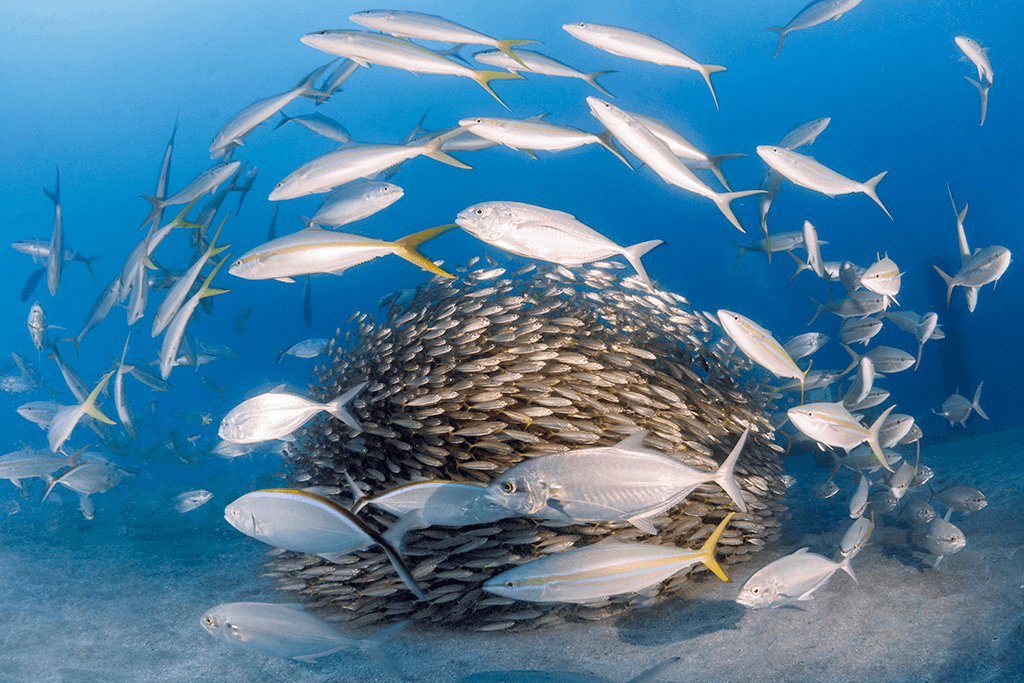
Underwater Attraction
Fish form into groups for a number of reasons. When these gatherings are made up of different species, don't seem to have any organized structure, and aren't moving from place to place, marine biologists would call it an aggregation rather than a school. Sometimes, it's the underwater landscape that causes these aggregations. Thinking in human terms, it would be like having a single picnic shelter in the middle of a park. That's where people will likely congregate—and a rain shower will most certainly drive them together for shelter. In the marine world, an object such as the hull of a ship, a seamount, a protruding coral formation or even a floating log will act as a fish aggregator, providing a safe place where fish can get out of the current or away from predators.
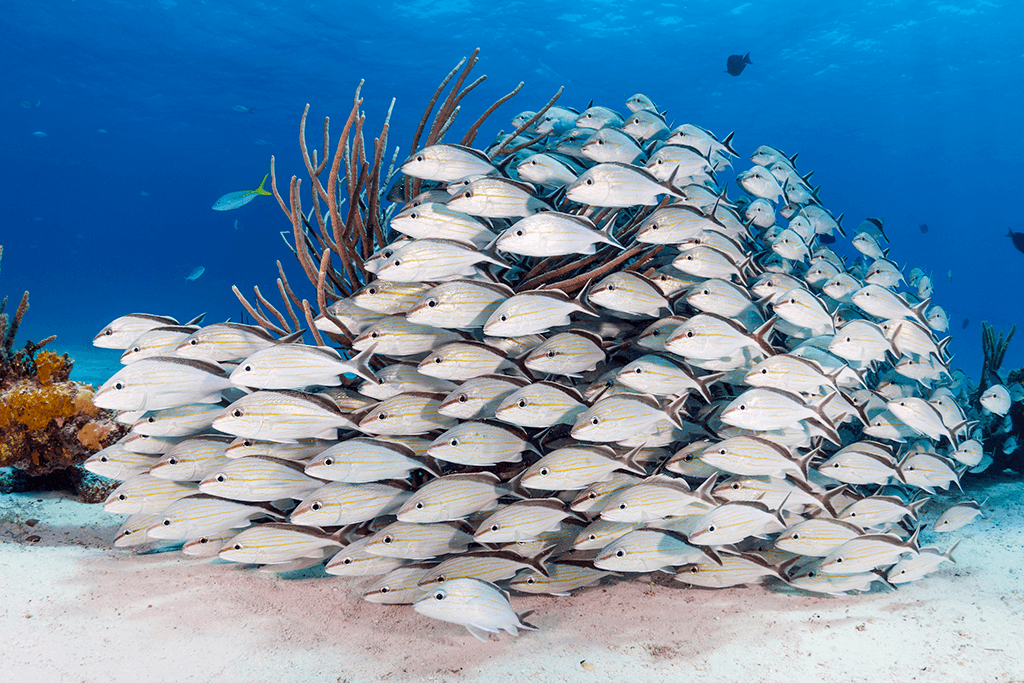
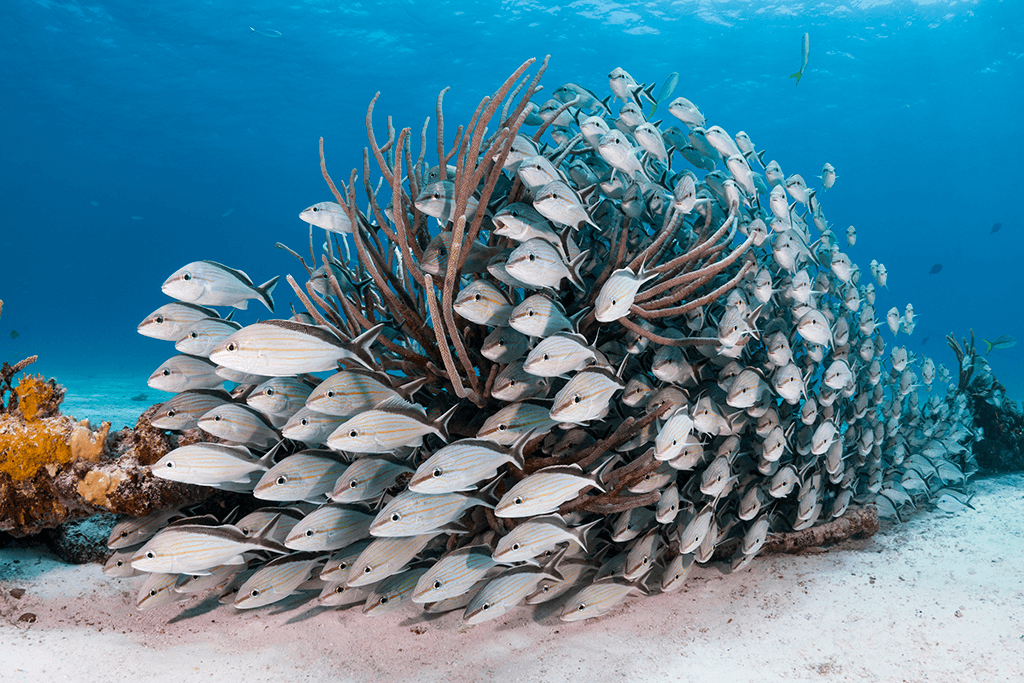
But sometimes, there's no obvious reason why fish are bunching up. The answer is usually either dinner or sex. It may be an abundant patch of food that brings the group together, but it might also be a strategy for getting the most from an average food supply. Much like shoppers swarming a mall during a big sale, an aggregation of fish will have the collective eyeballs needed to locate each available morsel, and meals that might be missed by one individual will likely be spotted by another. The scientific term for this type of activity is an unstructured aggregation, and it will often include a random mixture of species, all foraging together.
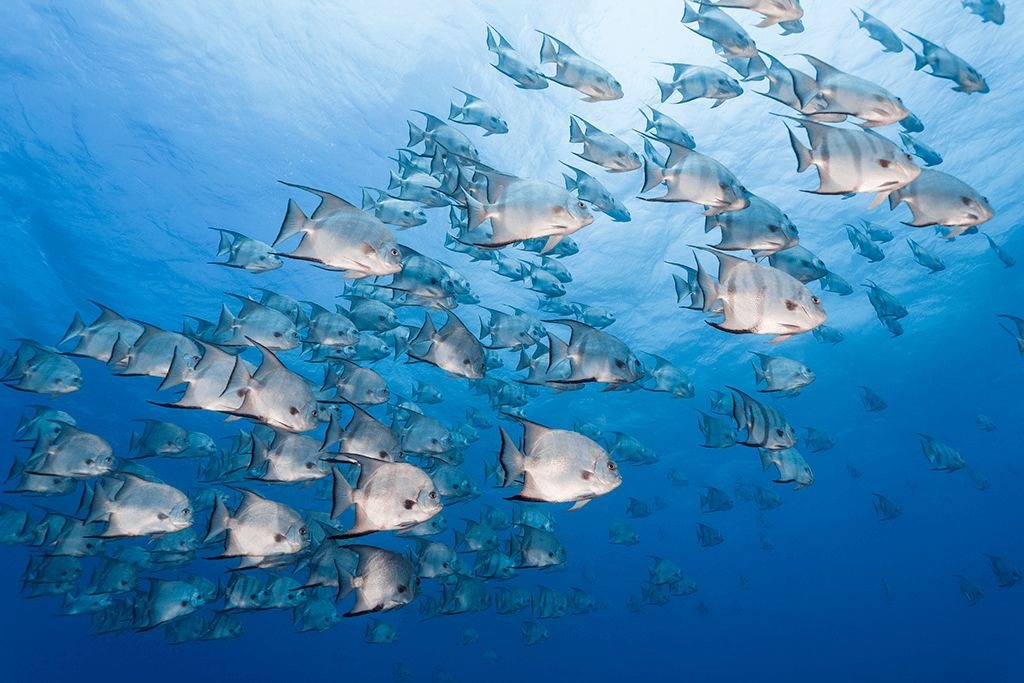
When gatherings are limited to a single species of fish, they are called a structured aggregation. Food and shelter are sometimes the reason for these gatherings, but more often, its sex. Spawning aggregations draw hundreds to thousands of individuals together to procreate, and the hook ups might last for just a few minutes or stretch out for months. Some spawns involve local fish populations that travel short distances for regular get togethers. This is a common practice for smaller, reef-dwelling fish, and there may be multiple spawns through the year—and sometimes on an almost daily basis. For some fish, the aggregation lingers long after the spawn is done, and involve a structured parenting arrangement such as a communal nesting site on a reef or sand flat.
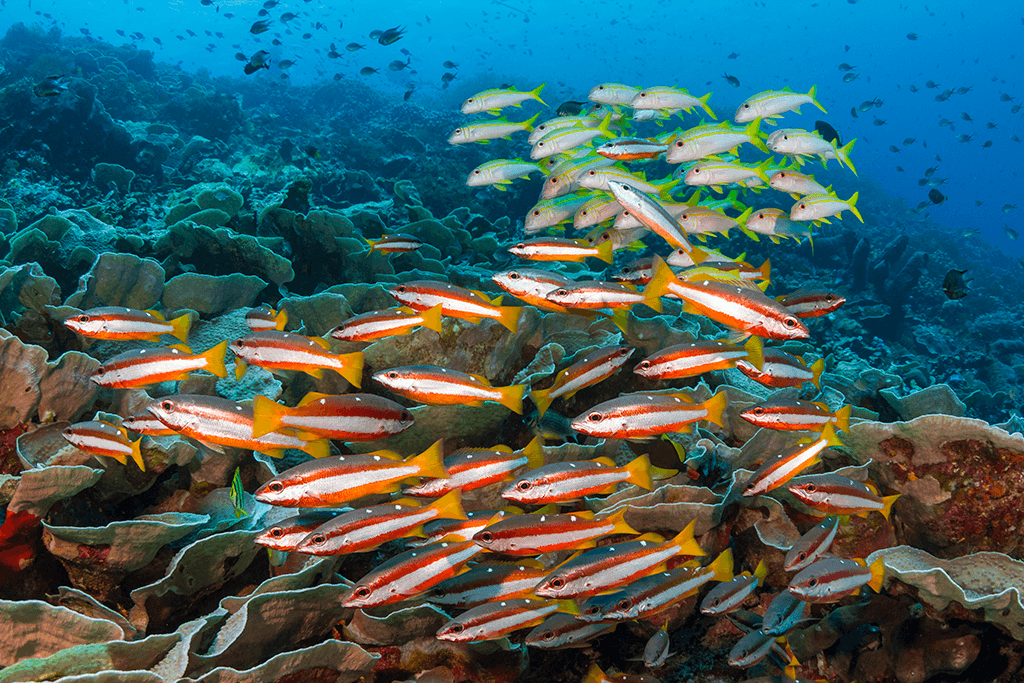
The most spectacular mating get togethers are the transient spawns that draw larger fish such as grouper and snapper in from great distances. These fish mingles can result in aggregations that number into the thousands. These spawns usually happen on an annual basis, and at the same time and place each year. The biological rationale is that by coming together in large numbers, the fish can deposit a more concentrated mix eggs and sperm in the water, increasing the chances of fertilization and reducing the overall effects of predation of the eggs.

A Shoal Thing
Most of us would call a group of fish of the same species a school. But if you want to be technically correct, that's not always the case. They might be a shoal. What's the difference? When you come across a group of fish of the same species is flitting about a coral head, hanging out together but not exactly going anywhere, the are shoaling. If the group were to tighten up and take off swimming in the same direction in a coordinated manner, they would then be schooling
Shoaling behavior is the term used for a group of fish that “remain together for social reasons.” About a quarter of all fish shoal all their lives, and half will shoal up at one point or another. In general, fish will shoal with others of their own species, size and appearance. One of the primary benefits of this behavior is as a defense against predators. The safety in numbers strategy means more eyes looking out for predators. In addition, the group's seemingly random movements and structure may confuse a would-be predator, and decrease each individual member's chances of being singled out for the attack.
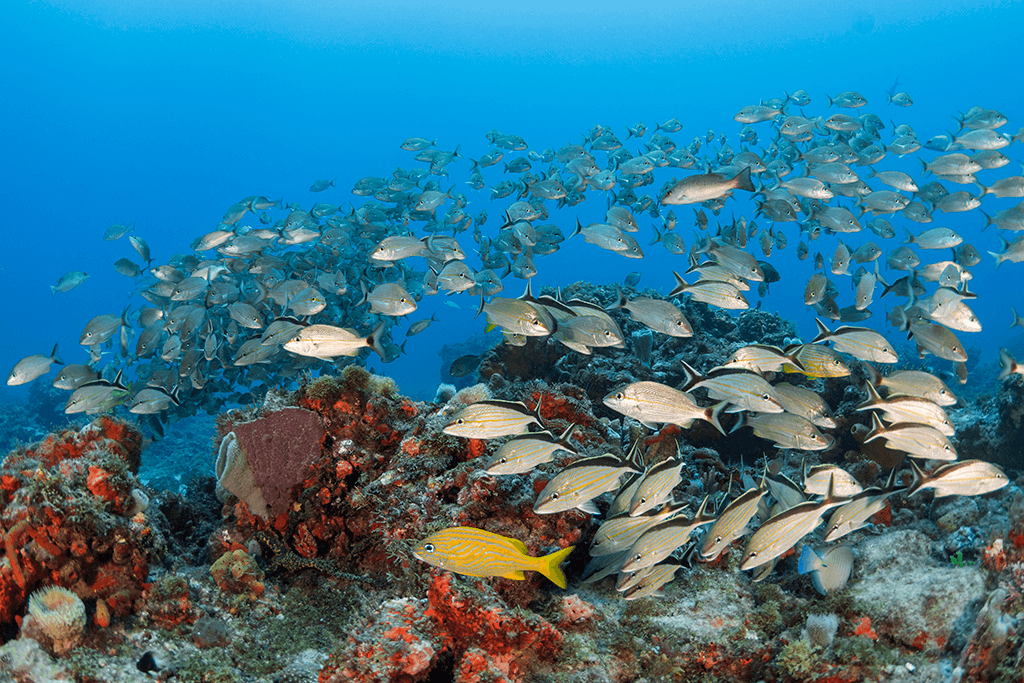
There are a lot of variables in the way fish shoal, but they generally follow recognizable patterns. A common arrangement is known as amorphous shoaling, in which fish appear to be swimming and foraging in a slightly independent fashion, but remain grouped together while moving about independently much like a flock of birds. When a shoal appears to be a tighter knit and assembled in a coordinated pattern, it is known as a polarized shoal. You may notice types of shoals when fish are hovering stationary next something like a coral head, large sponge or sea fan. These groups will sometimes move slowly out into the open, but so long as they don't move off in a specific direction, it's still a shoal.
Shoaling groups can sometimes include fish of different sizes, as well as including second species as part of the group. A good example of this is when a group of snappers and goatfish will often join together in one polarized shoaling formation above a reef line.

School’s in Session
Technically, a shoal becomes a school is when the fish in the group all decide they need to be somewhere else and go on the move. To a diver, the differences between shoaling and schooling can be subtle, particularly when a shoal of fish can transition from an amorphous state suddenly into a disciplined and coordinated school, then back again in a matter of seconds. In its most classic form, a moving school will have a mission-oriented behavior, with all members of the school holding to a tightly-structured formation as they travel. To accomplish this coordinated movement, the fish don't just rely on their vision, and instead, tap into a sophisticated biological version of a collision avoidance system.
Schooling fish are equipped with a lateral line that running the length of their body. This line is highly sensitive to vibrations and pressure gradients produced by moving objects in the surrounding water In addition to giving early warning of approaching predators or perceived threats such as inquisitive scuba divers, lateral line provides each member of a fish school with a precise ability to track the location and movements of its neighbors are without the need to see them. This ability takes on critical importance when a school receives an attack from one or more predators. A common response among schooling fish under attack is to unify even further into a tightly-packed and polarized mass. When this takes place, the fish in the center are not only blind to what is going on the outside, but also to where they going. They rely on information from their lateral lines to maintain the same speed, direction and position within their ranks.

The moments of a tightly-packed school of fish can be quite fascinating. Should the entire school suddenly need to reverse course, the transition between leaders and followers can be so fluid as to make the school appear to function through a single collective mind. When a unified school of fish feels threatened or comes under attack, they may execute a rapid turn with sudden acceleration. When this happens, the synchronized motion of their tail sweeps will often produce a very audible pressure wave.
Generally when you see a school comprised of one species of fish, they likely to all of the same size and age. Many biologists use the hypotheses of the "oddity effect” to explain this phenomenon. Its essence, by staying with schoolmates of equal size and appearance, no one individual runs the risk of standing out and presenting a more easily-recognized target, should a predator try to strike.
Learning to note the subtle patterns of fish schooling and shoaling will help you tune into the goings on of the marine environment, and recognize shifts in behavior triggered by the need to feed, rest, breed, or avoid predation. In addition, the subject always makes for good conversation around the Wakatobi's Jetty Bar at the end of the day.